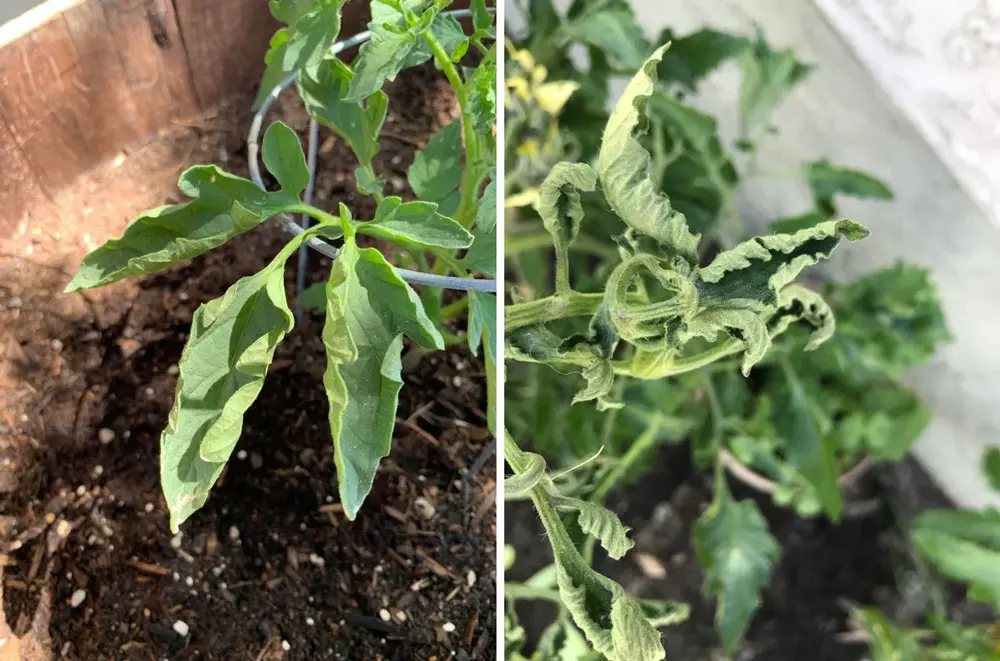As an avid gardener and plant enthusiast I’ve had my fair share of experiences with allium plants and their tendency to show signs of leaf curling. Through trial and error research, and good old-fashioned green thumb wisdom, I’ve uncovered the main causes and solutions for this common allium plant problem. My goal is to provide a clear, comprehensive guide to diagnose and treat leaf curling in allium plants, so your garden can thrive!
What Causes Allium Leaf Curling?
Before we dive into fixes, it’s important to understand the root causes of allium leaf curling:
Under or Overwatering
Alliums need a moderate, consistent supply of water to stay happy. Too much or too little leads to leaf curling due to stress. Overwatering causes soggy soil, leading to root rot and lack of oxygen Underwatering leads to drought stress. Both make leaves curl in an attempt to retain moisture
Temperature Extremes
If temperatures dip or rise too drastically, allium leaves will curl to protect themselves. This is a survival mechanism against cold or heat damage. Ensure temperatures remain relatively stable for your allium’s needs.
Pests
Thrips, aphids, onion maggots and other tiny critters can attack alliums, leading to curled, damaged leaves as they siphon away nutrients. Check for small insects, sticky residue or trails along leaves and bulbs.
Diseases
Fungal infections like downy mildew cause distorted, spotted and curled foliage. Bacterial issues like sour skin disease also lead to leaf curl symptoms.
Nutrient Deficiency
Lack of nitrogen, phosphorus, potassium or other essential nutrients leads to poor growth and curling as leaves desperately conserve resources. Fertilize appropriately to provide nutrition.
Environmental Stress
Too much sun, high winds and other environmental factors add stress to alliums. This shocks the plant into curling its leaves for protection.
Genetic Factors
Some allium varieties are more prone to leaf curling due to their genetic makeup. Growing conditions that are less than ideal can exacerbate this.
How to Fix and Prevent Allium Leaf Curl
Now that we’ve uncovered the likely culprits behind your allium’s curled leaves, here are organic, safe methods to get your plants back to their beautiful selves:
Adjust Watering Schedule
Consistent, moderate watering is vital. I recommend watering when the top few inches of soil become dry. Provide 1-2 inches of water per week as a guide, adjusting for climate, season and individual needs.
Provide Consistent Temperatures
Shield alliums from extreme temperature fluctuations, like sudden cold snaps or heat waves. Move potted varieties to protected areas as needed. Use row covers, cloches or cold frames in the garden for added insulation.
Control Pests Naturally
Regularly inspect for signs of pests like thrips, aphids and onion maggots. Remove infested material and use organic insecticidal soap or neem oil to treat. Also attract beneficial insects like ladybugs.
Treat Disease Organically
Remove diseased leaves immediately to prevent spread. Apply neem oil or copper fungicide sprays as an organic treatment for fungal and bacterial issues. Improve airflow and avoid overcrowding.
Fertilize Thoughtfully
Apply a balanced organic fertilizer when planting bulbs and again when foliage emerges. This provides a slow, steady nutrient release. Liquid fertilizers like fish emulsion also supply periodic nourishment.
Reduce Environmental Stress
Provide alliums with the right level of sun exposure, air circulation and protection from weather extremes. For example, utilize shade cloth to reduce intense sunlight in hot climates.
Choose Genetically Robust Varieties
When selecting allium bulbs or plants, seek out varieties described as vigorous, hardy or resistant to foliar issues. This innate genetic resilience helps combat leaf curling.
Monitor and Maintain Proactively
Prevention is key! Inspect plants frequently and respond promptly when issues arise. Tweak care routines based on seasonal conditions. Stay vigilant to keep alliums happy and curb leaf curling at the first signs of trouble.
With some attentive care, your allium leaves will return to their normal handsome form in no time. I hope these tips equip you to understand, treat and prevent leaf curling problems for allium health and beauty all season long. Let those impressive blossoms and striking foliage shine!

Physiological Disorders: A Twist in the Tale
Not all leaf curl is caused by invaders; sometimes, its an inside job. Physiological disorders can stem from environmental stress or care mistakes.
Stress from overwatering or poor drainage can lead to root issues, manifesting as leaf curl. Its a plants way of throwing a tantrum.
Ensure proper watering and drainage to give your Allium a fighting chance. Think of it as setting boundaries—its tough love for plant health.
The Balanced Diet for Allium Flavescens
For robust growth, your Allium needs a well-rounded diet. A balanced fertilizer applied during the initial flowering phase sets the stage for vitality. Stick to the script on the fertilizer package to avoid giving your Allium a nutrient overdose.
Keep an eye out for brighter leaves and new growth—these are your cues that youre hitting the mark with your feeding strategy. And dont forget the micronutrients; theyre the unsung heroes in your plants health saga. Iron, manganese, and even copper play pivotal roles, but like a potent spice, theyre best used in moderation. Too much, and youll turn the soil into a toxic wasteland for your Alliums roots.
TOMATO LEAF CURL – 3 Causes and What to Do When Your Tomato Leaves are Curling Up.
FAQ
Do curling leaves mean too much water?
What is the cause of the curling of leaves?
What deficiency causes curling of leaves?
